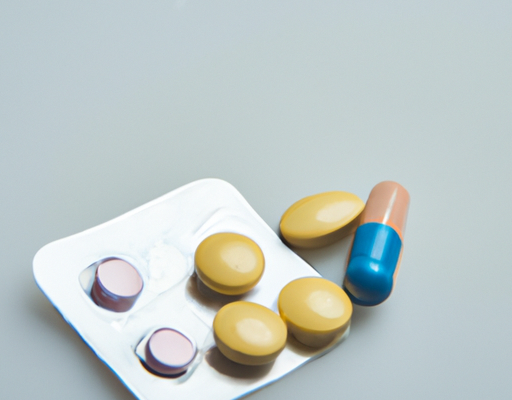Definition of Diabetes Insipidus
Diabetes insipidus (DI) is a rare hormonal disorder that occurs when the body doesn’t produce enough of the hormone vasopressin, which helps regulate the amount of water in the body. When the body doesn’t produce enough of this hormone, it can cause excessive thirst and frequent urination. DI can be caused by a variety of factors, including genetic mutations, organ damage or certain medications. There are two types of DI: central and nephrogenic. Central DI is caused by a lack of vasopressin production in the hypothalamus, while nephrogenic DI results from a resistance to vasopressin in the kidneys. Treatments for DI include medication or replacement therapy. Medication is used to increase the production or effectiveness of vasopressin, while replacement therapy provides a synthetic form of the hormone. Both treatments help to reduce the symptoms of DI and can allow patients to lead relatively normal lives.
Causes of Diabetes Insipidus
Diabetes insipidus is a rare disorder characterized by the excretion of large volumes of diluted urine due to a lack of antidiuretic hormone (ADH) production. ADH is responsible for restoring the balance of salt and water in the body, and its deficiency disrupts this balance and leads to a significantly increased volume of urine. Some of the causes of diabetes insipidus include damage to the hypothalamus or pituitary gland due to physiological or environmental factors such as a tumor, radiation therapy, surgery, head injuries, or infection. In some cases, the cause of diabetes insipidus is unknown. Unfortunately, this condition can be difficult to diagnose and treat, so it is important for people to be aware of the symptoms and speak to their doctor if they suspect they may have diabetes insipidus.
Diagnosis
Diagnosis of diabetes insipidus is typically made with a combination of laboratory tests. Commonly, tests for urine and plasma osmolality levels are conducted, as well as a urine specific gravity test to assess the concentration of the urine. These tests can help doctors determine if the body is able to properly concentrate or dilute fluids. Additionally, a water deprivation test may be used to see if a patient is able to concentrate urine after being deprived of water. Finally, imaging tests may also be used to assess the size of the pituitary gland and determine if the pituitary is the cause of the diabetes insipidus. Ultimately, these tests can help determine if diabetes insipidus is present and inform treatment decisions.
Treatment options
Treating diabetes insipidus involves managing the underlying cause and controlling the symptoms. To treat the underlying cause of the condition, medication may be prescribed to treat any underlying medical conditions such as a hormone imbalance. If the diabetes insipidus is caused by a tumor, surgical removal of the tumor may be recommended. For those who have central diabetes insipidus, the doctor may prescribe a synthetic form of the hormone vasopressin to replace what the body is unable to produce. In addition to medication, lifestyle changes may be recommended. This may include increasing fluid intake to prevent dehydration, avoiding extreme temperatures, and reducing stress. If a person is dehydrated, intravenous fluids may be necessary. With proper management and treatment, diabetes insipidus can be successfully managed and treated.
Synthetic hormones
Diabetes Insipidus is a rare medical disorder caused by hypothalamus malfunction. As a result, the body does not have enough anti-diuretic hormone (ADH) which is responsible for helping the body conserve water and electrolyte balances in the body. Synthetic hormones are a form of treatment that is being used to treat the condition. Synthetic hormones are created in a laboratory and used to replace the ADH the body needs in order to keep the balance of electrolytes and prevent dehydration. With the help of synthetic hormones, patients with Diabetes Insipidus can lead a normal life without the risk of dehydration or other complications.
Medications
Treating diabetes insipidus involves the use of medications that help to bring balance to the levels of hormones responsible for controlling fluid levels in the body. The most common medication used for this purpose is desmopressin, which is a synthetic form of the hormone called antidiuretic hormone (ADH). This hormone is responsible for ensuring the kidneys maintain the correct levels of water, and when the body does not produce enough of it, diabetes insipidus can occur. Desmopressin helps to restore the balance of ADH, reducing symptoms and improving the overall condition of the patient. This medications can be taken in a pill form, as a nasal spray, or through injections. as always, it is recommended that anyone considering this treatment speak with a healthcare professional before making any decisions.
Diet
Diet plays an important role in the treatment of diabetes insipidus. While there is no specific diet that is proven to improve the condition, people with diabetes insipidus can benefit from eating a balanced diet that is low in sodium and rich in water. Eating healthy, whole foods like fruits, vegetables, whole grains, lean proteins, and healthy fats can help provide the body with the essential nutrients it needs to manage the condition more effectively. Additionally, avoiding processed foods with added sugars can help keep blood sugar levels in check and reduce water retention. Finally, drinking plenty of water throughout the day can help keep the body hydrated, while also helping to flush out toxins that can worsen the condition. Taking small steps to make dietary changes can help make a big difference in the overall management of diabetes insipidus.
Surgery
Diabetes insipidus is an uncommon disorder that occurs when the body is unable to regulate the amount of water in the body. In some cases, surgical intervention may be necessary to treat diabetes insipidus. Surgery is most commonly used to treat central diabetes insipidus, which is caused by damage to the pituitary gland or hypothalamus. Surgery can be used to remove a tumor or repair damage to the pituitary gland or hypothalamus. In some cases, it may be necessary to insert a device called a shunt to redirect the flow of antidiuretic hormone in order to treat the condition. Surgery is not recommended for treating nephrogenic diabetes insipidus, as it is usually caused by an underlying medical condition that cannot be treated with surgery.
Alternative treatments
When it comes to treating diabetes insipidus, conventional medicine is just one option. Alternative treatments have also been found to be successful in managing the condition. Some of these include:
- Herbal remedies, such as astragalus, eleuthero and ginseng
- Acupuncture
- Chiropractic care
- Yoga and meditation
- Dietary changes, such as reducing sodium and increasing water intake
These alternative treatments help to reduce symptoms, improve hormone balance and reduce stress. It is important to note that these treatments should be used in combination with conventional treatments for optimal results. It is also important to discuss any alternative treatments with your doctor to ensure safety and effectiveness.
Prognosis
People with diabetes insipidus should be aware that the condition itself has no direct threat to life expectancy, but complications can arise if it is left untreated. Most patients are able to handle the disease with lifestyle modifications and proper medications, and with relentless observation of the needed daily activities. Generally, the prognosis of this condition is good and the life expectancy for those with diabetes insipidus is not reduced. Regular visit to the doctor and proper treatment are important for ensuring that this condition does not cause any foreseeable complications. If a person is not getting better even after treatment or is experiencing symptoms, it is essential to seek medical attention as soon as possible. Prompt diagnosis and adherence to proper treatment is essential for managing diabetes insipidus and living a healthy, normal life.
Prevention
Diabetes Insipidus can be managed, and even prevented, with the right lifestyle choices. First and foremost, it is important to maintain a healthy weight. Being overweight can increase the risk of developing this disorder. Exercise is also important, as it helps to regulate blood sugar and glucose levels. Furthermore, individuals should ensure they are getting enough sleep, as this helps to keep hormones in balance. Lastly, it is important to reduce stress levels, as this can interfere with the body’s ability to produce the necessary hormones. With these measures in place, individuals can reduce their risk of developing Diabetes Insipidus and keep it under control if they do develop it.





No Comments